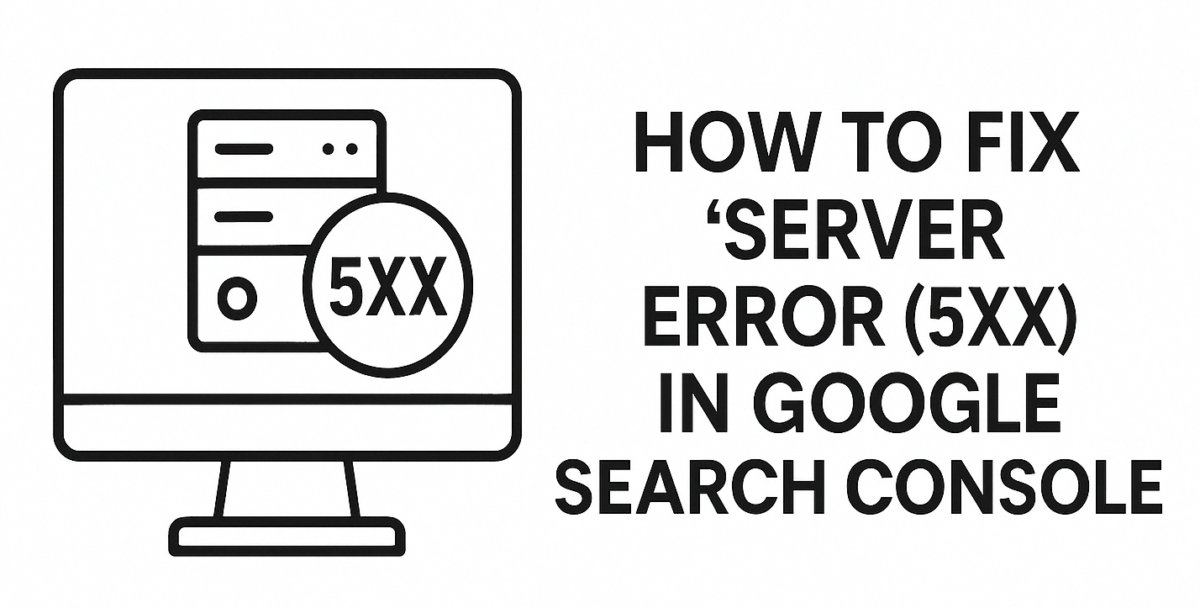Latest update: April 15, 2025
Proper indexing by Google is essential for your pages. They appear in the results and attract more clients to your business. If you’re using Google Search Console, you might see one specific issue – “Server Error (5xx)”.
5xx errors may disrupt your site’s uptime and user experience. You have to address them promptly to improve its trustworthiness and SEO performance. A reliable site shows users and browsers that your business is credible and worth the attention.
Keep reading and learn how to fix this problem!
What Is Server Error (5xx)?
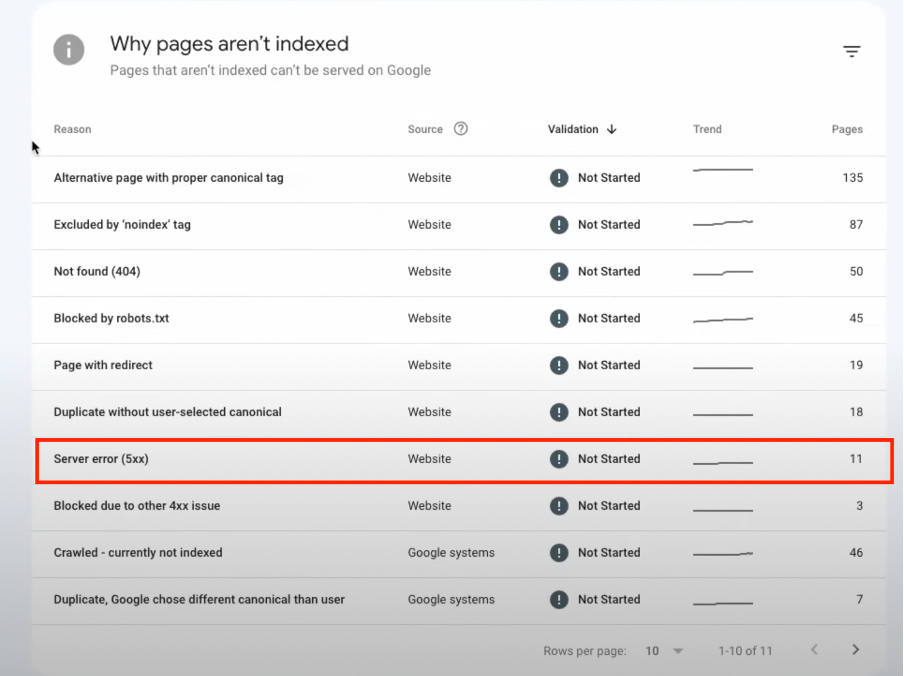
A “Server Error (5xx)” is an HTTP status code. It indicates that a web server experienced an issue preventing it from fulfilling a client’s request. These errors point out that the problem lies on the server’s side.
The “5xx” range covers specific errors. Each type indicates different underlying problems that can disrupt site performance and accessibility.
What are the Causes of 5xx Errors?
Here are the main reasons that might cause 5xx errors.
1.Server Overload
A server may be too overloaded when it receives a lot of requests simultaneously. So, processing further requests becomes impossible.
5xx errors often appear during traffic spikes, like sales events or viral content surges. Cyberattacks can also cause this.
An overloaded server may struggle to distribute sufficient resources. It leads to timeouts or failures in handling user requests.To better understand and diagnose these types of issues, it’s useful to check your server’s response using tools like the HTTP Requests Checker.
Misconfiguration
Improper settings or misconfigured software can also lead to “Server Error (5xx)”. The main aspects that cause this issue are:
- Incorrect file permissions;
- Faulty .htaccess rules;
- Misaligned PHP configurations.
For example, a missing or improperly set up .htaccess file can cause the server to reject requests.
2.Software Bugs
Server-side application mistakes can cause failures as well. These include outdated:
- Plugins,
- Themes,
- Scripts.
Bugs in the code or conflicts between software components may cause the server to return a 5xx error. These issues often appear after software updates.
3.Faulty Database
A malfunctioning or slow database can lead to this problem. Common causes are
- Excessive database queries;
- Corrupted database tables;
- Inadequate resources.
For instance, a poorly optimized SQL query can slow the database response time. It usually leads to timeouts and failures.
4.Maintenance or Downtime
Web servers may be temporarily unavailable because of
- Scheduled maintenance;
- Hardware failures;
- Unexpected crashes.
Users may experience 5xx errors during these periods. It happens because the server is offline or unable to respond to requests properly.
Types of 5xx Server Errors
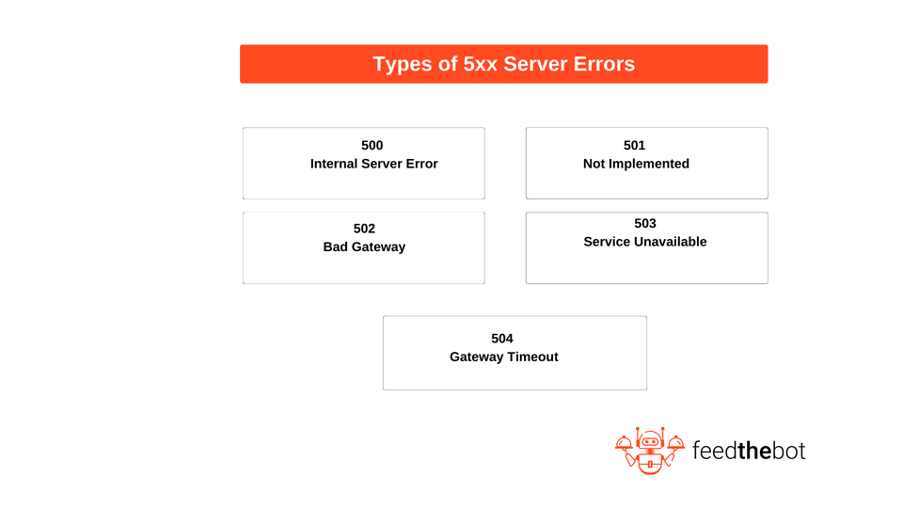
You already know what a “Server Error (5xx)” is. There are many reasons that can cause it on the server’s side. Now, let’s talk about some types of these errors.
500 Internal Server Error
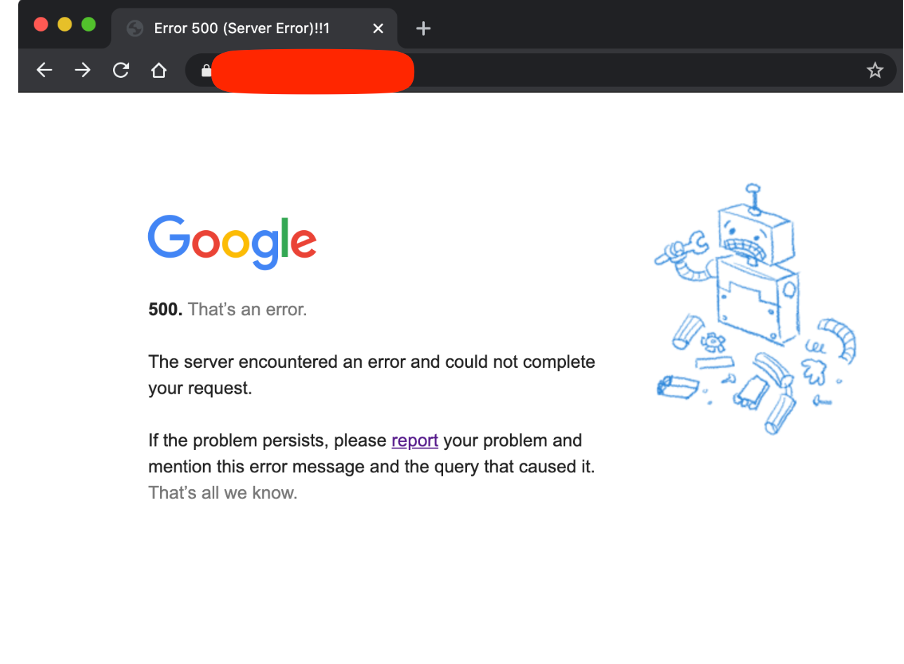
This is a generic message that shows something unexpected went wrong on the server. It doesn’t provide specific details. So, it might be hard to resolve.
Common causes for this are:
- Settings misconfiguration;
- Corrupted files;
- Database connection failures, etc.
501 Not Implemented
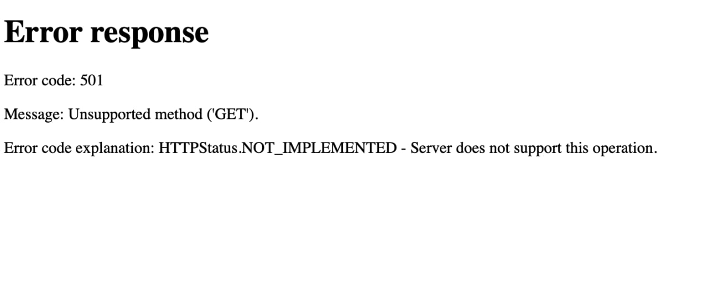
This error appears when the server does not support the request method. Or it may lack the necessary functionality to process it. It might happen if a client sends a request using an HTTP method that the server can’t recognize.
502 Bad Gateway
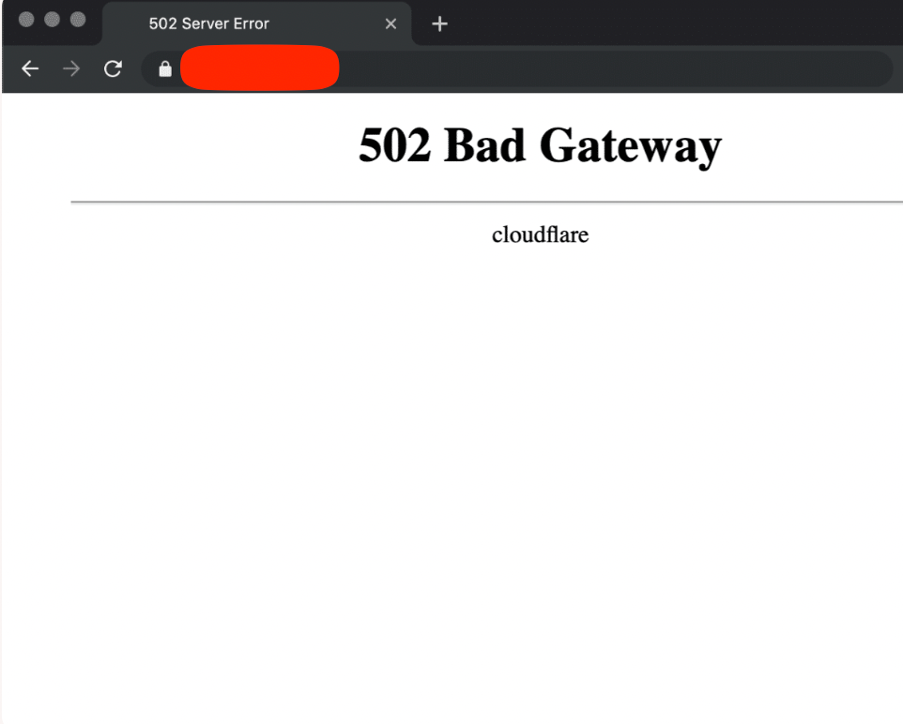
A 502 error happens when a gateway receives an invalid or no response. This issue is common for load-balanced environments.
Possible causes include:
- DNS resolution failures;
- Firewall restrictions;
- Overloaded upstream servers;
- Network congestion.
503 Service Unavailable
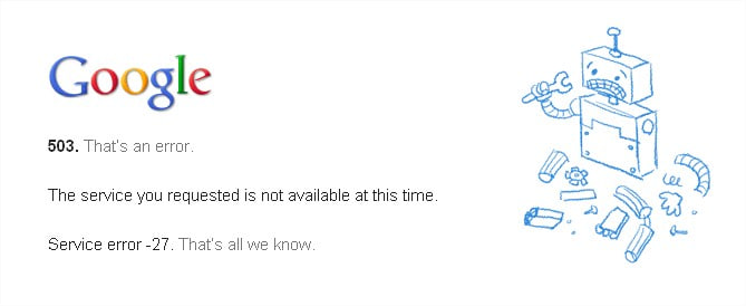
This error indicates that the server is temporarily unable to manage the request. It usually happens due to maintenance or an overload.
For example, you might face this error when it exceeds the resource limits. Another reason is the need for scheduled downtime.
504 Gateway Timeout
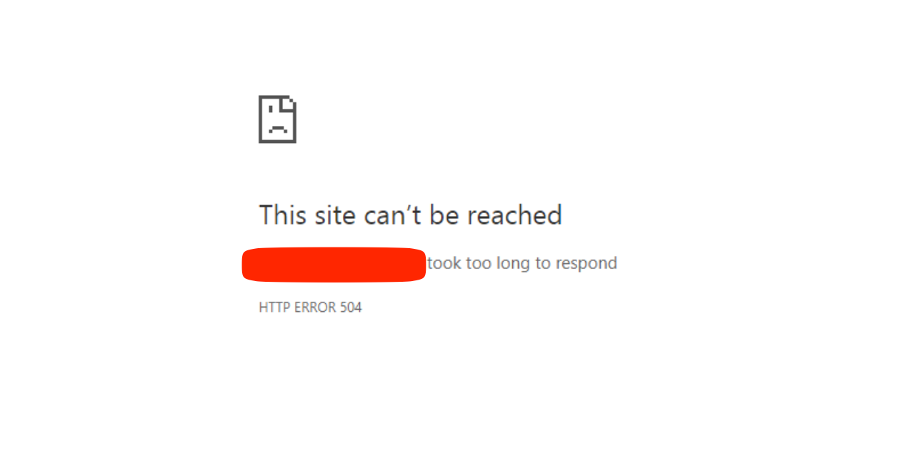
A 504 error happens when a gateway or proxy does not receive a response from the upstream server within a certain time. The typical reasons are:
- High latency;
- Poor network connectivity;
- Overloaded backend server.
Are 5xx Errors Bad for SEO?
Yes, 5xx errors in Google Search Console can significantly harm your SEO. If Googlebot encounters these errors, it may drop affected pages from its index, leading to:
Crawling and Indexing Problems
Googlebot relies on flawless access to a site to crawl and index pages effectively. It may drop them from the index when 5xx errors appear. This leads to a substantial drop in organic traffic.
Frequent mistakes may cause Googlebot to reduce the crawl frequency. It assumes that your site is unreliable. This means more time to rank.
In general, Google may temporarily de-prioritize crawling if errors continue for a long time. This affects your visibility a lot.
Poor UX
Visitors who face 5xx errors may leave the site immediately. It increases bounce rates. High rates and poor dwell time signal to search engines that your site can’t give a good UX.
Plus, users may lose trust in your site and choose competitors instead. Persistent downtime damages your brand reputation. So, it’s harder to retain visitors and convert them into customers.
Loss of Search Rankings
Browsers may interpret your site as unreliable and lower its rankings because of “Server Error (5xx)”. Opponents with stable pages will likely outrank you.
Even if your rankings were previously great, they might start dropping. All of this may lead to a loss of traffic and revenue.
Wasted Crawl Budget
Google allocates a specific crawl budget to each site. It dictates how many pages it will crawl in a given timeframe.
Repeated 5xx errors waste this budget on failed requests instead of crawling new content.
It may be a huge problem when you have many pages. You’ll struggle to get the entire site crawled efficiently. It often leads to gaps in indexing.
Step-by-Step Guide to Fixing Server Error (5xx)
Google Search Console reports 5xx server errors when your site fails to respond correctly to Googlebot’s requests. You already know they can negatively impact your indexing and rankings.
So, you should know how to diagnose and fix them.
Step 1: Check GSC
The first step is to go to your Google Search Console when you notice a drop in search traffic or receive a notification about an error. Visit the “Pages” section in the menu.
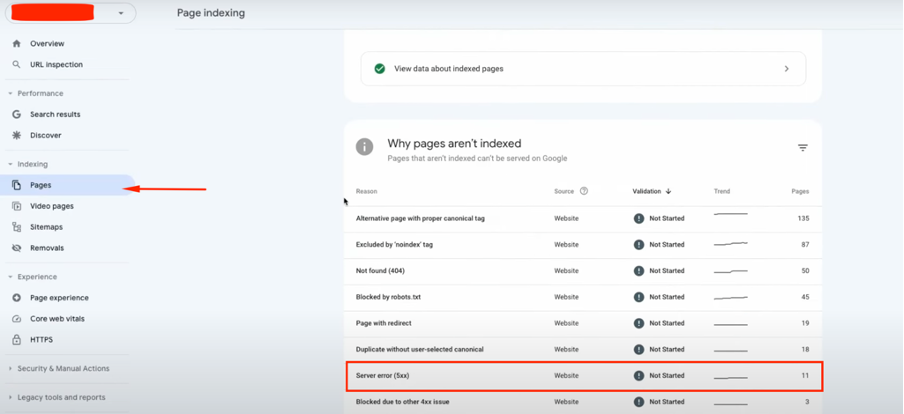
Look for affected URLs and examine the timestamps of when the errors appeared.
Temporary server instability might be the reason for it if the issue is irregular. However, we recommend investigating it more if it’s persistent.
Click on each damaged URL and check out the “Crawl stats“. It will give you more insights and you can narrow down potential causes.
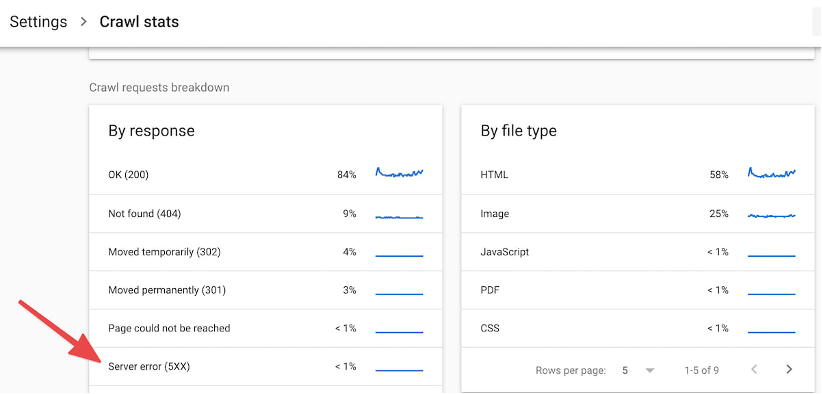
Step 1: Evaluate Status and Uptime
The next step after finding problematic URLs is to verify if your server is experiencing downtime or instability.

You can use diverse online monitoring tools to check whether it has been inaccessible at specific times. Restarting it may help you resolve temporary issues.
However, if the errors occur frequently, you should investigate deeper. Try to determine if hosting limitations or software problems caused it.
Step 2: Review Logs for Clues
Server logs have useful info that can help you diagnose 5xx errors.
Check the error.log file if you are using Apache. It will reveal when specific PHP scripts or database queries are failing.
For Nginx, review the nginx.error.log file. It can help you pinpoint configuration issues or resource constraints.
By examining error messages in these logs, you can determine the possible cause. Common entries may indicate
- Database connection failures;
- Permission issues;
- Plugin conflicts.
Step 3: Fix Misconfigurations in Settings
We’ve mentioned above that incorrect server configuration is a common cause of “Server Error (5xx)”.
Inaccurate .htaccess rules can lead to unexpected problems. You can try resetting it to the default state to resolve it.

Plus, security plugins or firewall rules may be mistakenly blocking Googlebot’s requests. So, review access logs to identify if this is the case. Also, whitelist Googlebot’s user agents to prevent blockage when necessary.
Manage Server Resources
Your server may exceed its allocated resources during traffic spikes. It results in 503 errors we highlighted above.
Here are some things you can do to avoid overloading it:
- Optimize for high traffic loads;
- Employ caching;
- Use a CDN for proper distribution, etc.
Also, optimize your database queries by indexing frequently accessed data.
Step 4: Resolve Proxy and Gateway Problems
You may face 502 and 504 errors when you depend on reverse proxies or gateway servers. These problems usually happen when the origin server is slow to respond. Or it might reject requests from the proxy.
So, make sure to assess the response times and adjust the timeout settings.
Also, check if the firewall is not blocking requests from the proxy. Increase timeout limits in the web server configuration to avoid gateway timeout problems.
Step 5: Request Google to Revalidate Fixed URLs
The last step you should take after resolving “Server Error (5xx)” is to request Google to revalidate the affected URLs. That way, you can ensure they are crawled again.
Go to the “Coverage” Report in Google Search Console.
Then find the “Validate Fix” section and click on it. This will prompt Googlebot to recrawl the URLs and update its index accordingly.
Conclusion
“Server Error (5xx)” in Google Search Console signals issues with your site’s server, which can harm your SEO efforts. These errors typically arise from server overload, misconfigurations, or software issues.
By optimizing server resources, resolving misconfigurations, and addressing proxy issues, you can fix 5xx errors and improve your site’s performance. Use this guide to ensure a stable and reliable online presence.
We hope you found this guide helpful! If you encounter other errors, refer to our Google Search Console guidelines to resolve them.

